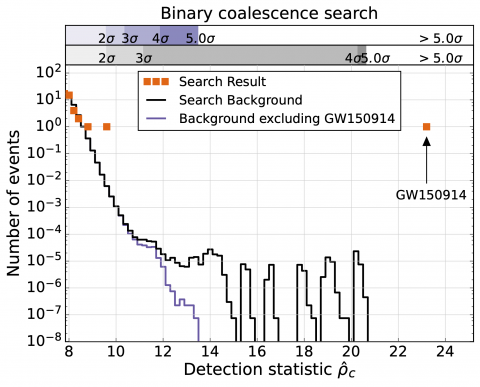Datasets
Open Access
Reproducing GW150914: the first observation of gravitational waves from a binary black hole merger
- Citation Author(s):
- Submitted by:
- Ewa Deelman
- Last updated:
- Tue, 05/17/2022 - 22:21
- DOI:
- 10.21227/c634-qh33
- Data Format:
- Research Article Link:
- Links:
- License:
 606 Views
606 Views- Categories:
- Keywords:
Abstract
In February 2016, LIGO announced the first observation of gravitational waves from a binary black hole merger, known as GW150914. To establish the confidence of this detection, large-scale scientific workflows were used to measure the event's statistical significance. These workflows used code written by the LIGO Scientific Collaboration and were executed on the LIGO Data Grid. The codes used to perform these analyses are publicly available, but there has not yet been an attempt to directly reproduce the results, although several subsequent analyses have replicated the analysis, confirming the detection. In this paper, we attempt to reproduce the result from the compact binary coalescence search presented in the GW150914 discovery paper using publicly available code executed primarily on the Open Science Grid. We show that we reproduce the original result, discuss the challenges we encountered, and make recommendations for scientists who wish to make their work reproducible.
This data set contains a copy of the PyCBC v1.3.2 PyInstaller bundled executables used by the analysis in "Observation of Gravitational Waves from a Binary Black Hole Merger" B. P. Abbott et al. (LIGO Scientific Collaboration and Virgo Collaboration) Phys. Rev. Lett. 116, 061102 (2016). The executables are used by the generate_workflow.sh script to create and execute the PyCBC search workflow.
The data set also contains the HDF5 file that was produced by running the workflow on a mixure of Open Science Grid and USC/ISI compute resources to reproduce the LIGO result. This HDF5 file is used as input to the make_pycbc_hist.sh script to create the right-hand histogram shown in Figure 4 of Abbott et al.
For more information on the files, see the file README.md
Dataset Files
Output of PyCBC search workflow used to make Figure 4 of Abbott et al. H1L1-STATMAP_FULL_DATA_FULL_CUMULATIVE_CAT_12H_FULL_DATA_FULL_BIN_1-1126051217-3331800.hdf.gz (2.52 GB)
PyCBC v1.3.2 PyInstaller Bundled Executables pycbc-v1.3.2-x86_64-composer_xe_2015.0.090.tar.gz (4.65 GB)
Open Access dataset files are accessible to all logged in users. Don't have a login? Create a free IEEE account. IEEE Membership is not required.
Documentation
| Attachment | Size |
|---|---|
| 2.54 KB |






